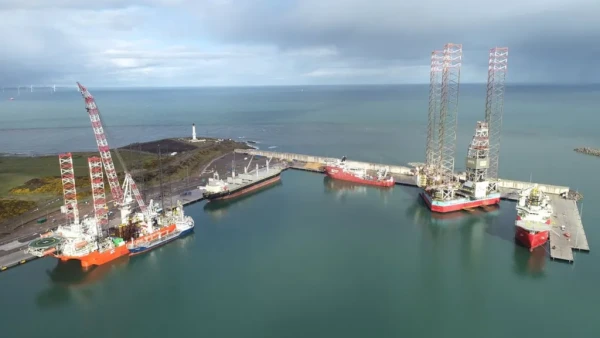Our Views
Common Mistakes in PPP Feasibility Studies: Lessons from African Projects
Public–Private Partnerships (PPPs) have become a cornerstone of infrastructure development in Africa, helping governments deliver essential services in transport, energy, water, and healthcare. Yet, despite their potential, many PPP projects struggle to reach financial close — often due to weak feasibility studies.
A well-prepared feasibility study is the foundation of any successful PPP. It determines whether a project is bankable, affordable, and aligned with public priorities. However, recurring mistakes in the early stages can derail even the best-intentioned initiatives. Drawing on lessons from African projects, this article highlights common pitfalls and offers practical ways to avoid them.
Why Feasibility Studies Matter
Feasibility studies are not just a procedural step — they are the decision-making tool that tests a project’s technical soundness, financial viability, and long-term sustainability. In a PPP, they assess value for money, risk allocation, and affordability for both users and governments.
In many African countries, projects are fast-tracked without adequate feasibility work, leading to inflated costs, poor risk management, and lengthy renegotiations. Strengthening this stage saves time and resources later and helps governments build credibility with investors and lenders.
The Most Common PPP Feasibility Mistakes
1. Starting with the Solution, Not the Problem
A frequent error is defining the PPP structure before understanding the service gap. Teams often choose a 25-year DBFO model without fully analysing the problem they’re trying to solve. The result: a misaligned project.
Lesson: Begin with a service-based problem statement. Evaluate several delivery options — public procurement, hybrid models, or availability-based PPPs — and justify the choice through a structured value-for-money analysis.
2. Overoptimistic Demand Forecasts
Many feasibility studies assume demand growth that far exceeds reality. Toll roads, ports, and utilities often underperform because projections rely on limited or outdated data.
Lesson: Use multiple data sources, including independent traffic counts or market surveys. Run conservative, base, and high cases, and test affordability for users to ensure realistic revenue assumptions.
3. Ignoring Risk Allocation and Lifecycle Costs
Some studies use generic risk matrices without tailoring to local realities such as currency volatility, land issues, or off-taker credit risk. Others underestimate operation and maintenance (O&M) costs, leading to declining service quality mid-contract.
Lesson: Develop a project-specific risk register early and integrate full lifecycle costs into financial models. Contracts should clearly define performance standards and maintenance obligations.
4. Weak Legal and Regulatory Due Diligence
Legal gaps in PPP frameworks, procurement rules, or tariff-setting powers can create uncertainty for investors.
Lesson: Conduct a legal gap analysis before procurement. Confirm the contracting authority’s powers, dispute-resolution mechanisms, and security arrangements to ensure bankability.
5. Lack of Market Sounding
Projects are sometimes launched without testing investor appetite. Unclear payment mechanisms or unrealistic risk transfers can discourage bids.
Lesson: Engage with credible developers, lenders, and advisors early to validate assumptions. Market sounding helps refine project structure and reduces surprises later in the tender.
Fiscal and Financial Oversights
PPP feasibility often overlooks fiscal implications. Even when a project is “bankable,” it may create long-term fiscal commitments beyond what the government can sustain.
Lesson: Conduct affordability tests and create a Fiscal Commitments and Contingent Liabilities (FCCL) register to track government exposure. Use viability gap funding (VGF) strategically and ensure payment schedules align with budget capacity.
Another frequent oversight involves foreign exchange (FX) risk. Many African PPPs rely on foreign-denominated loans while revenues are in local currency, exposing projects to volatility.
Lesson: Evaluate options such as partial credit guarantees, local currency lending from development banks, or blended finance mechanisms to mitigate FX risks.
Case Study: Lessons from a Transport PPP in East Africa
In 2023, an East African government prepared a toll road PPP to connect two major cities. Initial feasibility assumed traffic growth of 8% per year and an unrealistic 100% cost recovery through tolls. Market sounding revealed investor concerns about affordability and foreign-exchange risk.
After revising the model, the government adopted an availability-payment structure with a capped revenue-sharing mechanism and partial guarantee from a development bank. This adjustment reduced fiscal exposure and attracted three qualified bidders, showing how early engagement and realistic modeling can turn a struggling project into a viable one.
The Role of Governments and Advisors
Governments play a central role in ensuring feasibility studies meet international standards. Strong PPP units and inter-ministerial coordination improve project selection, while external advisors bring specialized technical, financial, and legal expertise.
Development partners such as the African Development Bank (AfDB) and World Bank often support feasibility work through project preparation facilities. By promoting consistent quality reviews, they help countries move from ad-hoc deals to sustainable PPP pipelines.
Advisors, meanwhile, act as catalysts — identifying weaknesses, aligning stakeholder expectations, and translating feasibility insights into actionable procurement strategies.
Conclusion
A strong feasibility study is the best safeguard against failed PPPs. It protects public funds, reduces renegotiations, and builds investor confidence. African governments and development partners have made progress, but raising the quality of feasibility work remains a top priority for sustainable infrastructure delivery.
By investing in sound analysis, realistic assumptions, and open market dialogue, countries can ensure their PPPs deliver value — not just for financiers, but for citizens who depend on reliable infrastructure every day.










